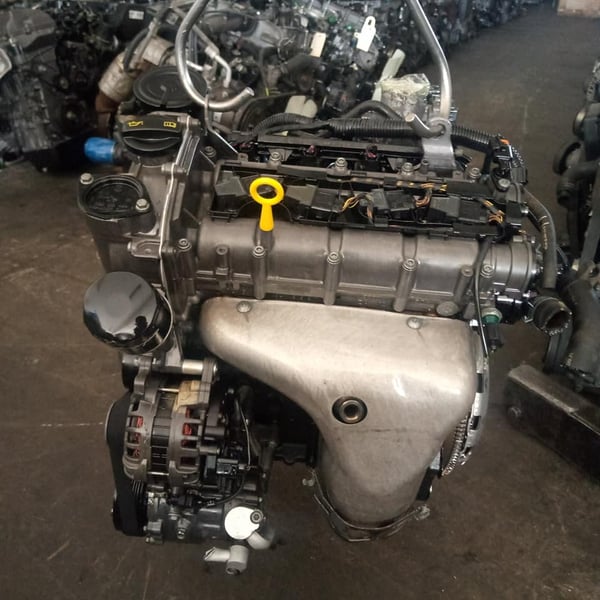Achieve long-term reliability with the right clp engine.
Achieve long-term reliability with the right clp engine.
Blog Article
How a Clp Engine Can Enhance Effectiveness in Various Industries
The introduction of CLP engines notes a considerable change in operational performance across numerous industries, driven by their capacity to enhance gas consumption and lessen downtime. Industries such as manufacturing and logistics stand to get considerably from their durable design and constant power result, which guarantee to simplify operations and improve performance. As organizations progressively prioritize sustainability alongside efficiency, the duty of CLP engines ends up being much more essential. What remains to be seen is how these advancements will form the future landscape of commercial operations and their effect on more comprehensive financial trends (clp engine).
Summary of CLP Engines
CLP engines, or Continuous Fluid Propellant engines, stand for a considerable improvement in propulsion innovation, particularly for space applications. These engines utilize a continuous feed system that permits the sustained expulsion of propellant, resulting in enhanced performance and performance compared to typical strong or hybrid propulsion systems. By maintaining a consistent flow of fluid propellant, CLP engines can accomplish much more precise drive control, which is important for maneuvering spacecraft in numerous mission circumstances.
The style of CLP engines integrates sophisticated materials and cutting-edge fuel monitoring systems. clp engine. This results in decreased weight and raised dependability, essential variables for long-duration area goals. The continual operation lessens the risk of burning instability, an usual difficulty in standard rocket engines.

Benefits in Manufacturing
The manufacturing of Constant Liquid Propellant (CLP) engines presents several notable benefits that boost both effectiveness and cost-effectiveness. One of the main benefits is the streamlined production procedure, which lowers the intricacy related to conventional propulsion systems. By utilizing liquid propellant, suppliers can attain greater precision in engine efficiency, bring about enhanced energy outcome and decreased waste.
Furthermore, CLP engines assist in a higher level of modularity, permitting for much easier assimilation into different manufacturing lines. This versatility can dramatically reduce lead times and enhance total operational versatility. The usage of CLP technology additionally has a tendency to minimize the demand for considerable maintenance due to less moving components, which translates right into decreased downtime and functional prices.

Applications in Logistics
Leveraging Continual Liquid Propellant (CLP) engines in logistics uses substantial hop over to here benefits in functional performance and integrity. These engines provide a durable remedy for numerous transport demands, enabling the seamless movement of items throughout substantial ranges. The integral layout of CLP engines permits constant power outcome, which equates right into smoother and more predictable transportation routines.
Among the crucial applications of CLP engines in logistics is in heavy-duty freight transportation, where they can drive both ground and airborne cars. Their capacity to keep high performance under differing load problems guarantees that delivery timelines are satisfied, consequently improving customer satisfaction. In addition, CLP engines can be incorporated into automated logistics systems, assisting in real-time tracking and maximizing path planning.
In addition, the resilience of CLP engines lowers upkeep downtime, allowing logistics firms to maximize their operational capacities. This is especially beneficial in warehousing procedures, where effectiveness in handling and transferring goods is essential. As logistics proceeds to evolve, the assimilation of CLP engines represents a forward-thinking strategy that not only boosts performance yet also supports the market's growing demands for integrity and speed.
Effect On Energy Effectiveness
How do Constant Fluid Propellant (CLP) engines enhance energy performance in transport? CLP engines make use of a consistent circulation of fluid fuel, optimizing burning processes and preserving a secure thrust outcome. This layout reduces power losses connected with conventional burning engines, where gas delivery can differ and result in inadequacies.
The continuous operation of CLP engines permits an extra efficient thermal cycle, resulting in higher certain impulse contrasted to conventional engines. clp engine. This converts to reduced fuel intake for the same amount of work done, dramatically decreasing operational costs across different transportation fields, consisting of aviation and maritime industries
Furthermore, the capability of CLP engines to preserve look these up ideal efficiency under differing tons problems minimizes the demand for constant velocity and slowdown, better boosting gas performance. Boosted power performance not just adds to cost savings but also leads to lower greenhouse gas emissions, aligning with international sustainability objectives.
Future Trends and Innovations
Arising innovations in Continual Liquid Propellant (CLP) engine innovation assurance to transform the landscape of transport effectiveness and sustainability. As sectors pivot toward greener choices, CLP engines stand at the leading edge, integrating ingenious products and design methodologies that enhance efficiency while lessening environmental impact.
Among one of the most appealing trends is the fostering of crossbreed systems that integrate CLP engines with renewable resource resources. This synergy can maximize gas consumption and reduce exhausts, lining up with international sustainability goals. Innovations in computational liquid dynamics (CFD) are assisting in the design of even more aerodynamically effective engines, leading to reduced drag and enhanced gas effectiveness.
Furthermore, the development of clever monitoring systems is readied to enhance functional efficiencies. These systems utilize data analytics and IoT modern technology to optimize engine performance in real-time, making certain that the engines operate within their most reliable specifications.
As research remains to discover alternative propellant formulas-- such as biofuels and artificial fuels-- the future of CLP engines looks appealing. By harnessing these technologies, industries can not only boost their effectiveness but likewise add substantially to a cleaner, more sustainable future in transport.
Final Thought
To conclude, CLP engines stand for a considerable advancement in effectiveness throughout numerous sectors. Their ability to enhance fuel usage and minimize functional costs, integrated with a constant feed system, improves power result and functional integrity. The integration of advanced materials and fewer relocating components decreases upkeep needs, while placement with sustainability goals positions CLP engines as a pivotal technology for the future. Continued development in this field promises more renovations in performance and ecological efficiency.
Report this page